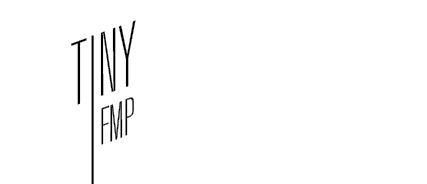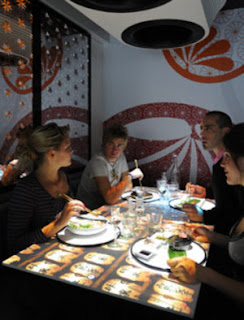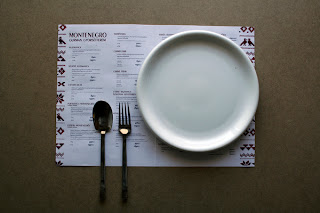Monday 27 February 2012
Saturday 25 February 2012
Friday 24 February 2012
Brief 5 - Futuristic Menus
When talking menus just aren't futuristic enough, we reckon Teraoka's Deli Touch pen is the next best thing. The system works with barcode-laden menus and enables customers to simply swipe their choices and have them beamed directly to the kitchen. Besides hastening the order process and keeping the interaction between customer and waiter / waitress at a minimum, the device may also give you a solid reason to skimp on the tip -- not that we'd recommend such a thing, of course. Unfortunately, we've no idea if this setup is built to play nice with picky eaters and their laundry list of special requests, so we'd probably recommend steering clear unless you're totally cool with the standard fare.
 |
| Small handset placed on table that can be digitally connected to the kitchen to update food choices. |
 |
| Interactive table design by Microsoft. Projection screen shines onto table where movement is captured and means that you can move images on the screen around. |
Brief 5 - Rethink/ Redirection
After today's crit I am slightly changing this brief. A lot of people commented that they think it is a lot to take on board to re-design menu's for four restaurant's and their in house branding. This would be a huge undertaking and there is a risk of repetition in design; meaning that I will be designing the same things for each restaurant and there is a risk that I wont be learning anything new for each restaurant. If I am not learning anything or gaining anything then it is pointless.
Fred made a point that I need to focus on the PROBLEM. Initially I thought that the problem was that the menu's had seemed to be forgotten about and didn't show much consideration with their branding. However, all businesses that I am working with are successful.... so what are the menu's going to help solve?
I need to re-evaluate what I am trying to solve here.
For the menu's I am trying to strengthen the customers experience. All places have a reasonable amount of custom. However, strengthening the brand's identity and the experience whilst dining there could increase the money spent by customers.
The main reason any restaurant would change anything is to increase profits.
The restaurant's I chose are successful and have no real problem to solve. Therefore I think I need to take a different direction and focus on bigger companies who can afford to take bigger risks and have bigger money allowances for these changes.
To enable me to have a more hands on aspect to my research I will still be choosing restaurants in the Leeds city centre area. This will enable to to visit the restaurants and understand better how to improve them.
As it relates to my rationale I will be choosing restaurants in the high end market. By default these restaurants will have stores nationwide and even worldwide possibly.
I will be trying to increase profits by the re-design of a menu so I need to find places who aren't using their menu's to their full advantage.
Here is a list of restaurants in the Leeds city centre area that also have multiple stores:
Yo-sushi - Harvey Nichols
Chaophraya
Akbar's
Blackhouse
Strada
The Living Room
Pickles and Potter Deli
Malmaison
Loch Fyne
Gourmet Burger Kitchen
Pizza Express
I would like this brief to be very unique in the way that menu's are used and their interactivity. I don't want to just re-design a menu by looking at materials and layout. I want it look at all aspects like what are customers needs in certain restaurants (fast food, slow paced), is there any technology out there that is new to the market and could help to revolutionise how people chose what they want to eat in a restaurant and the dining experience as a whole.
I need to think about:
Innovative menu
Make money + increase sales
Customer interaction
Fred made a point that I need to focus on the PROBLEM. Initially I thought that the problem was that the menu's had seemed to be forgotten about and didn't show much consideration with their branding. However, all businesses that I am working with are successful.... so what are the menu's going to help solve?
I need to re-evaluate what I am trying to solve here.
For the menu's I am trying to strengthen the customers experience. All places have a reasonable amount of custom. However, strengthening the brand's identity and the experience whilst dining there could increase the money spent by customers.
The main reason any restaurant would change anything is to increase profits.
The restaurant's I chose are successful and have no real problem to solve. Therefore I think I need to take a different direction and focus on bigger companies who can afford to take bigger risks and have bigger money allowances for these changes.
To enable me to have a more hands on aspect to my research I will still be choosing restaurants in the Leeds city centre area. This will enable to to visit the restaurants and understand better how to improve them.
As it relates to my rationale I will be choosing restaurants in the high end market. By default these restaurants will have stores nationwide and even worldwide possibly.
I will be trying to increase profits by the re-design of a menu so I need to find places who aren't using their menu's to their full advantage.
Here is a list of restaurants in the Leeds city centre area that also have multiple stores:
Yo-sushi - Harvey Nichols
Chaophraya
Akbar's
Blackhouse
Strada
The Living Room
Pickles and Potter Deli
Malmaison
Loch Fyne
Gourmet Burger Kitchen
Pizza Express
I would like this brief to be very unique in the way that menu's are used and their interactivity. I don't want to just re-design a menu by looking at materials and layout. I want it look at all aspects like what are customers needs in certain restaurants (fast food, slow paced), is there any technology out there that is new to the market and could help to revolutionise how people chose what they want to eat in a restaurant and the dining experience as a whole.
I need to think about:
Innovative menu
Make money + increase sales
Customer interaction
FMP First Crit
For the first crit I showed all of my proposed briefs, however I decided to focus on brief 5 and get feedback solely on this so that it was more focused. I showed my initial ideas for the Oracle bar menu.
1. Consider focusing one restaurant and rebrand all of it instead of doing several menus for several restaurants.
2. Need more appropriate range of deliverables. What will you learn?
3. Well thought out layout ideas and materials used convey high end luxury brands.
4. Fits SOI well, how could this project be taken further? Web/ Promotional material?
5. Take into account the concept of the band, style, interior when creating menu's. Try to break away form the normal menu design. Look at notepad formats and ipads, etc.
6. It seems quite narrow what you are re-branding.
7. If you are changing the menu's the overall branding will change for the restaurant.
8. What is the problem you are solving? How are you helping the companies get more profit from re-designing menu's?
9. Try to use restaurants from different price ranges/ style/ cuisine to show a range.
10. Menu could be four per restaurant: wine, starters, main, desserts.
From this feedback it is clear that I need to be more direct with what it is I am trying to accomplish from this brief.
1. Consider focusing one restaurant and rebrand all of it instead of doing several menus for several restaurants.
2. Need more appropriate range of deliverables. What will you learn?
3. Well thought out layout ideas and materials used convey high end luxury brands.
4. Fits SOI well, how could this project be taken further? Web/ Promotional material?
5. Take into account the concept of the band, style, interior when creating menu's. Try to break away form the normal menu design. Look at notepad formats and ipads, etc.
6. It seems quite narrow what you are re-branding.
7. If you are changing the menu's the overall branding will change for the restaurant.
8. What is the problem you are solving? How are you helping the companies get more profit from re-designing menu's?
9. Try to use restaurants from different price ranges/ style/ cuisine to show a range.
10. Menu could be four per restaurant: wine, starters, main, desserts.
From this feedback it is clear that I need to be more direct with what it is I am trying to accomplish from this brief.
Thursday 23 February 2012
Brief 5 - Identities
Oracle -
The name Oracle suggests wisdom and mystery.
The building is round.
The interior is very clean with a lot of white and light woods.
These three images below sum up what I would like the menu to look like.
Interesting binding technique using string, elastic or ribbon. Brown card against white thick paper.
Splash of colour.
Writing about food in handwriting.
The menu needs to reflect the atmosphere in the restaurant and therefore needs to be colourful and vibrant.
I think the idea of using stamps to create a rustic and individual feel would work well here.
Offers from the menu or venue information on disks that sit on the plates when you are seated add that little something to the experience.
Viva -
I need to keep the Italian theme very strong and traditional. The restaurants needs to feel more branded and purposeful inside.
My idea is a very stylised menu, with every aspect reflecting the logo and branding. Small details are key here to make it look as authentic as possible. Small cards of special pegged to the table cloths and string to tie everything together will help to reate the overall feel and look.
The name Oracle suggests wisdom and mystery.
The building is round.
The interior is very clean with a lot of white and light woods.
These three images below sum up what I would like the menu to look like.
Interesting binding technique using string, elastic or ribbon. Brown card against white thick paper.
Splash of colour.
Writing about food in handwriting.
The River Plate -
The menu needs to reflect the atmosphere in the restaurant and therefore needs to be colourful and vibrant.
I think the idea of using stamps to create a rustic and individual feel would work well here.
Offers from the menu or venue information on disks that sit on the plates when you are seated add that little something to the experience.
The New Conservatory -
The inside os very traditional and exudes class. I think a slight contrast would work well here. WIth a modern twist of minimalist design this will help to bring the restaurant up to date whilst still keeping the traditional features. Ink stamps and hand written receipts will help to keep everyones experience personal.
Viva -
I need to keep the Italian theme very strong and traditional. The restaurants needs to feel more branded and purposeful inside.
My idea is a very stylised menu, with every aspect reflecting the logo and branding. Small details are key here to make it look as authentic as possible. Small cards of special pegged to the table cloths and string to tie everything together will help to reate the overall feel and look.
Brief 5 - Menu Inspiration
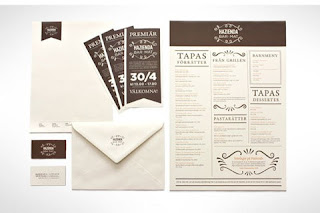 |
| Strong branding with illustration creating personality |
 |
| 3D design improves the legitimacy of the brand. |
 |
| The brown card makes the design look eco friendly and handmade. The design is very minimal and still interesting. |
 |
| Good clip on specials menu for a place mat or table. |
 |
| Highlighting a restaurants assets. Wooden interior takes on part of the branding and identity |
 |
| Having each range a different colour but the rest of the design the same makes the branding very strong and noticeable. |
 |
| I really love the personalised touch with the use of the wax seal. This could be used to enclose a receipt or even a tip from the customer. |
 |
| Wine menu on a wine bottle. Lovely simple idea and can be easily changed without excessive costs, |
 |
| Specials menu that everyone will notice. On your plate and also acts as a cover so it doesn't get dirty. |
 |
| Lovely feminine finish on the edges of the menu page. Contrasts with the old fashioned fork illustration but works well. |
 |
| Small lunch time menu comes with the cutlery and also serves as a tie to keep everything together. |
 |
| Simple but effective finishing touches like a flower or plant in with the serviette. Could use lavender to make the serviette smell nice. |
 |
| 3D design turned into a 2D menu design adds dimension to it. |
 |
| Easy to change menu. Metal clasps hold the page in place and can be changed easily without large costs, |
 |
| Simple design with added class with the use of embossing. |
 |
| Beautiful foil spot varnish. Makes the menu stand out with little effort. |
 |
| Hand made individual look. Stamp will be different every time it is used. |
 |
| Hand writing adds personality. |
 |
| Range of restaurant branding. Lovely homely feel. String, brown card. High end feel is created with the use of minimal design. |
 |
| Menu on paper bag. Bag is used in takeaway to contain food. People know the menu and can take it away with them for no extra cost to the company. |
 |
| Simple string decoration adds to the character of the restaurant. It isn't necessarily about the type and image, little interior details can add to the branding. |
 |
| Black on white design is simple but effective. It says what it needs to say and nothing else. |
 |
| Simple touches of colour and silhouettes keep the menu easy to read but more interesting. |
 |
| Lovely leather design with simple paper menu attached. The expensive leather is kept and robust whilst the actually menu can be easily changed. |
 |
| The idea of playing with textures on a plate could be explored further into a 'playing with your food' idea. |
 |
| This is a very personalised idea with lots of character. The different typefaces used show many personalities and a fun aspect to the brand. |
 |
| Beautiful place setting again showing off the specials menu simply toed together with string to add a rustic affect. |
 |
| Range of restaurant items transferred over into hotel design. |
 |
| I love this cute idea for a deli whose menus are ever changing. This easy and reusable method for labelling new and exciting goods works well. |
 |
| Menu stack incorporates how the menus fold into a design of their own. |
 |
| Menu card could be designed to show what you had eaten each time you have visited. Sort of like a loyalty card but more detailed, for people who like to try something new every time. |
 |
| Simple silhouette images work well to help the eye find where they want to be looking without having to read everything first. Fish, meat, salad sections are shown with the relative images. |
 |
| Very simple and effective design. Elastic holds the paper in place. Read brown and black run throughout the design to tie it together. |
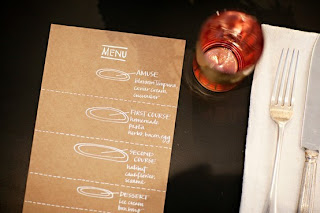 |
| Simple illustrations inform the customer of what they will be eating. |
 |
| Outside menu helps to bring customers inside. This is the first thing they see about the restaurant to it needs to represent you in a good light. |
Subscribe to:
Posts (Atom)
